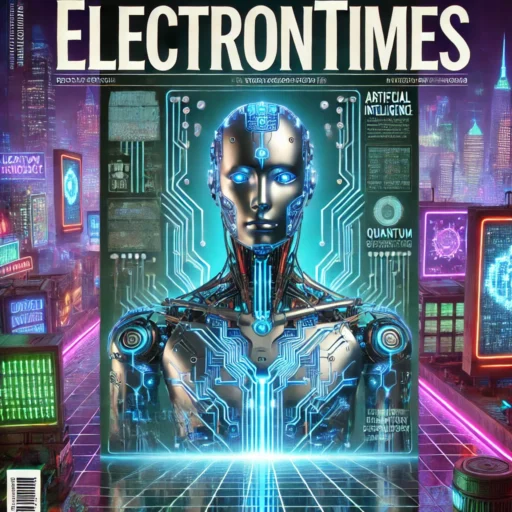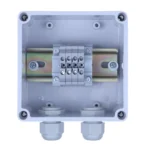The growing demand for consumer electronics is having a significant impact on the market in various ways. This demand is driving innovation, increasing competition, and reshaping global supply chains. However, it also presents challenges related to sustainability, resource management, and market saturation. Here’s how the demand is affecting the market:
1. Rapid Innovation and Technological Advancements
- Faster Product Cycles: To meet consumer demand for cutting-edge devices, companies are increasingly launching new and improved products on a faster cycle. This has led to the development of advanced features in products like smartphones, wearables, and smart home devices (e.g., 5G connectivity, AI integration, and better displays).
- AI and IoT Integration: Consumer electronics are becoming more intelligent through the integration of artificial intelligence (AI) and the Internet of Things (IoT). This includes smart home devices, voice assistants, and AI-powered cameras. As consumers demand more connected experiences, electronics companies are compelled to integrate these technologies into their products.
2. Increased Competition and Market Fragmentation
- Price Sensitivity: The proliferation of consumer electronics, especially smartphones, wearables, and laptops, has led to fierce competition in the market. As a result, companies must innovate to differentiate their products while keeping prices competitive. This has led to a price war, where manufacturers offer different tiers of devices (budget, mid-range, high-end) to cater to various consumer segments.
- Brand Loyalty vs. New Entrants: Established brands like Apple, Samsung, and Sony maintain strong customer loyalty. However, there has been an influx of new brands, especially in emerging markets, competing with lower-priced alternatives. These new entrants are often able to offer similar or even superior technology at more affordable prices, which puts pressure on dominant brands.
3. Supply Chain Pressures
- Component Shortages: The surge in demand for consumer electronics, especially during the COVID-19 pandemic, exacerbated global semiconductor shortages. These shortages affected the production of not only smartphones but also automotive electronics, home appliances, and even gaming consoles.
- Logistics and Distribution: High demand has put pressure on global supply chains, causing delays in the delivery of products and components. Shortages of raw materials, such as lithium and cobalt (used in batteries), and transportation bottlenecks have made it more challenging to meet consumer demand on time.
4. Rising Environmental Concerns
- E-Waste: The rapid turnover of consumer electronics, driven by frequent product upgrades, is contributing to an increase in electronic waste (e-waste). As old devices are discarded or replaced by newer models, the burden of e-waste disposal is becoming more significant. This has prompted calls for better recycling programs and eco-friendly product designs.
- Sustainability in Manufacturing: Companies are under increasing pressure to improve the sustainability of their manufacturing processes. This includes using recycled materials, reducing carbon emissions, and developing longer-lasting products to combat the growing issue of e-waste.
5. Shift to Subscription-Based and Cloud Services
- Subscription Models: To supplement product sales, many electronics companies are increasingly offering subscription-based services, such as cloud storage, software updates, or premium services. For example, companies like Apple and Microsoft offer subscription-based services for digital content, storage, and software, making revenue more predictable and long-term.
- Cloud Integration: The demand for smart devices is driving companies to expand their cloud-based offerings. Cloud storage and data management are integral to many consumer electronics products, from smartphones and tablets to smart home systems. This transition is changing how consumers interact with their devices and access services.
6. Market Saturation and Matured Product Categories
- Slower Growth in Certain Segments: While the demand for consumer electronics is growing, the market for some categories, like smartphones and personal computers, is reaching a point of saturation in developed markets. As a result, growth in these sectors is slowing down, and companies must innovate with new features to keep consumer interest alive (e.g., foldable screens, 5G connectivity).
- Focus on Upgrades: In saturated markets, manufacturers focus more on incremental upgrades rather than entirely new products. For instance, smartphones may only see minor improvements in features or design (such as improved cameras or longer battery life) instead of radical changes.
7. Regional Differences and Emerging Markets
- Growth in Emerging Markets: While developed markets are seeing slower growth, demand in emerging markets such as India, Southeast Asia, and Africa continues to rise. The increasing affordability of smartphones, TVs, and other electronics is expanding access to technology in these regions, boosting global sales.
- Localization of Products: Companies are also tailoring products to meet the specific needs of regional markets. For example, in regions with less stable internet infrastructure, there is an increasing demand for offline functionality in smartphones and smart TVs.
8. Influence of Consumer Behavior and Social Trends
- Social Media and Influencer Culture: Consumer electronics are often marketed through social media and influencer endorsements. As influencers showcase the latest gadgets, they play a significant role in driving demand, especially for high-end devices and new releases.
- Customization and Personalization: Consumers are increasingly seeking personalized products and experiences. This trend has led to a rise in demand for customizable devices (such as smartphones with personalized cases, skins, and colors) and software experiences.
9. Security and Privacy Concerns
- Data Privacy: As consumer electronics become more interconnected, privacy and security concerns are rising. Many electronics manufacturers are prioritizing robust security features in devices (e.g., biometric authentication, end-to-end encryption, etc.) to address these concerns and retain consumer trust.
- Regulation of Data Usage: Increased consumer awareness of privacy issues is prompting stricter regulations around the collection and storage of user data, which is directly affecting how companies design and manage their devices and services.
10. Influence on Marketing and Retail
- Online Shopping and Direct-to-Consumer Sales: The demand for consumer electronics has fueled a shift to online retail, with many manufacturers bypassing traditional brick-and-mortar stores and opting for direct-to-consumer (DTC) sales through their websites and online platforms.
- Omni-channel Strategies: Retailers are adopting omni-channel marketing strategies to offer a seamless experience between online and offline stores. This is helping them cater to consumers who prefer to shop online but want the option of physically testing and buying electronics in-store.
Conclusion:
The demand for consumer electronics is driving innovation, competition, and new business models, but it also brings about challenges such as resource depletion, e-waste management, and supply chain disruptions. Companies must balance the need for constant innovation with a growing focus on sustainability and efficient manufacturing to meet the evolving needs of consumers. Moreover, market saturation and environmental concerns are prompting a shift towards longer product lifecycles, subscription services, and more responsible consumption and disposal practices.
Hashtags
#SmartDevices #ConnectedTech #IoTDevices #SmartHomeTech #TechForEveryHome #SmartTechRevolution #WearableTech #SmartWearables #FitnessTech #HealthWearables #TechForHealth #HealthTechInnovation #MobileTech #Smartphones #MobileInnovation #TechOnTheGo #MobileDevices #TechForEveryone #EcoFriendlyTech #GreenElectronics #SustainableTech #CircularEconomy #GreenInnovation #TechForSustainability #GlobalTechTrade #SupplyChainChallenges #ElectronicsSupplyChain #TechImports #TechExports #GlobalTrade #TechInnovation #AdvancedTech #FutureTech #NextGenDevices #TechRevolution #ElectronicsInnovation #PersonalizedTech #CustomTech #TailoredDevices #TechForYou #PersonalTechExperience #TechCustomization #TechCompetition #PriceWars














